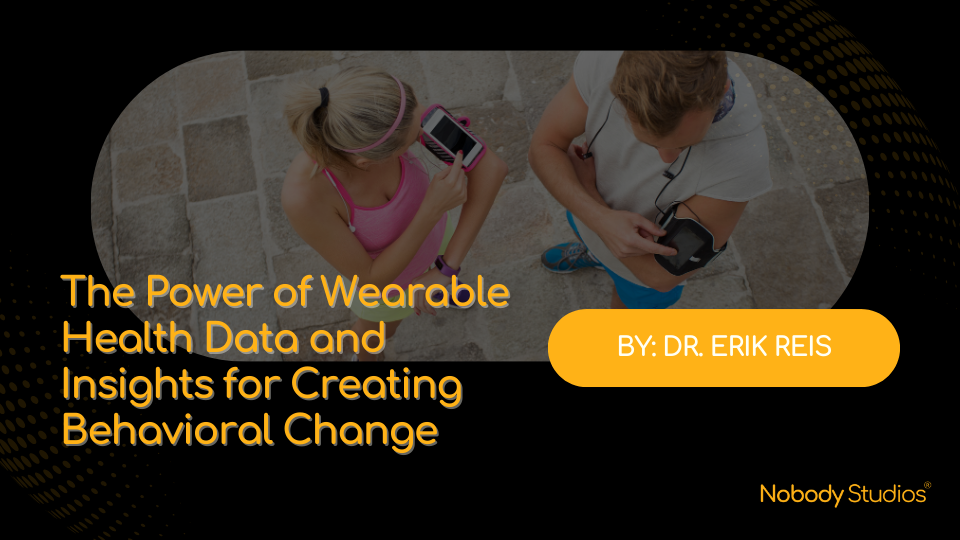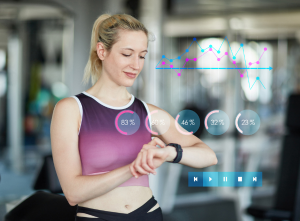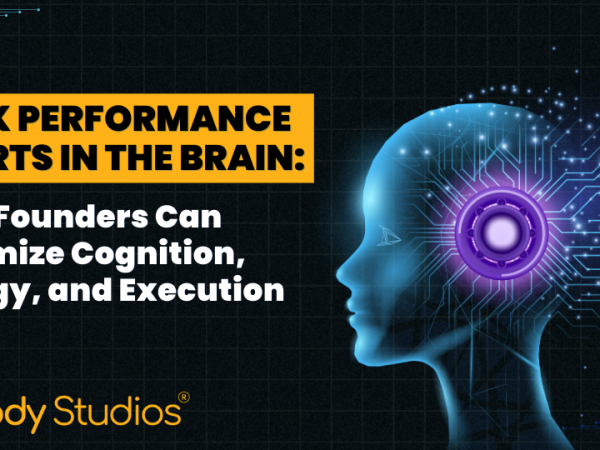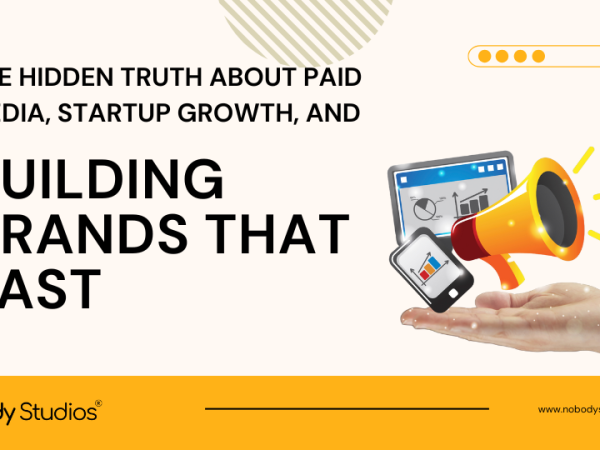
My Fellow (and Future) Nobodies,
Data has quickly become the new global currency, as this digital gold is now one of the most sought-after commodities worldwide. Companies are working tirelessly to acquire data, learn from it, and share their insights to gain an edge on their competition and to understand their target market better than they may understand themselves.
“In God we trust, all others bring data” – W. Edwards Deming.
At Nobody Studios, data is foundational for our decision-making and for generating conviction for our Newcos. While we don’t always publicly discuss it, we’re grateful that others have taken notice!
We’re proud to report that we were recently named a top Data-driven Venture Firm in the DDVC 2024 Report!

This month, we want to take you on a journey to examine how we’re using data in the Health and Wellness sector to enhance people’s well-being and create companies that we hope will change the world of healthcare.
Understanding Our Individual Health Metrics: How Data Drives Insights to Create Change
Data starts with accurate information collection, which is why we’ve been focusing on wearable technology and the integration of hardware devices and software creation since day one.
With an array of wearable devices at consumers’ fingertips, understanding and utilizing the health metrics these devices provide can be a game-changer in our quest to help people live healthier and longer lives.
Wearables already possess vast amounts of data for us—heart rate, sleep patterns, heart rate variability (HRV), pulse oxygenation (O2), physical activity levels, etc.
These metrics aren’t just numbers; They’re insights into our daily health that can show trends and guide us toward better lifestyle choices.
However, most people lack the fundamental knowledge to understand these metrics. Even when they do, they still don’t know what their numbers should or shouldn’t be.
Test Question: What is a healthy average HR and HRV for a 45-year-old caucasian female living in Texas, USA? How does that relate to similar individuals in her city, region, state, or country? How do genetics and epigenetics influence those numbers?
Although medicine has “norms” that we’ve established, wearables harness the power to collect and generate personal insights that are far more accurate and precise than standardized norms. These ranges are the collective averages used in a standard doctor’s office, but that doesn’t mean they’re suited for your optimal health.
Your personal health history, data, and metrics will always be the best comparison for you and your health because they can tell a story of your health journey.
There is no one else like you in the world, and there never will be.
These markers and trends can show you where you started and are heading, creating a functional roadmap to potential success. It’s personalized medicine at its finest.
More importantly, studies have shown that those who consistently monitored their physical activity through wearables were likelier to engage in healthy behaviors than those who didn’t.
The feedback provided by wearable devices like Fitbit, Oura, Massimo, and Apple Watch can help motivate us to move more, sleep better, eat smarter, and recover faster.
There’s a reason why we’re bullish about this sector…
The Science Behind Wearables and Longevity

It’s well known that the lower your blood pressure, fasting insulin, and HDL/total cholesterol levels, the longer you will live.
While blood tests and doctor visits can provide these temporary snapshots, wearables can provide a consistent stream of data and a magnitude of continuous data points that can give us trends and insights over months and even years.
Wearables are already monitoring heart rate variability (HRV) and sleep quality to help us predict our longevity and overall health. Devices that track these metrics already give us a window into our body’s stress responses and recovery status, empowering us with the knowledge to manage stress more effectively and optimize recovery.
But what should your ideal HRV number be?
If you look at the charts, the most significant success metric is that a higher HRV score usually means a healthier outcome.
Unfortunately, we still don’t know what your individual HRV number should be, as it is highly variable from person to person.
Brilliant individuals like Marco Altini, Ph. D., are paving the way in this field by publishing research, personal data insights, and sequential changes in his health metrics based on his training regimens and recovery protocols.
Still, the information coming from personal case studies is an N=1.
Data is foundational for gathering information about our health, but the insights and actionable takeaways are what excite us about this vertical.
Let’s bring this to life with a real-world example from clinical practice.
Personal Stories from Private Practice: Danielle’s Healthcare Transformation Through Wearable Technology
Most people shy away from things that scare them, like going to the doctor, running lab tests, and discovering that they might have a specific health condition. But Danielle was desperate for answers.
For the last six years, she’s been dealing with symptoms of persistent dizziness, fatigue, exhaustion, and relentless body pain. She’s also been diagnosed with Type II Diabetes, Fibromyalgia, Tension Headaches, and Sleep Apnea.
Before all of this started, she was on a significant weight loss journey and lost nearly 100 lbs via diet and exercise before these symptoms came on. Sadly, she’s gained most of her weight back and has progressively felt worse because of her health situation.
So, how has data helped Danielle start to improve her health?
Danielle has seen multiple specialists, providers, and therapists for her situation, leaving with little to no answers. She ended up coming in to see me for her dizziness symptoms from a previous patient who was dealing with similar issues.
While we’ve been making significant gains with her dizziness, the biggest gains we’re seeing are in her blood sugar levels and management of her Type II Diabetes via her continuous glucose monitor (CGM).
Can dizziness and blood sugar levels be connected? Absolutely.
Fortunately, her insurance paid for her CGM to help her monitor foods and trends that occur when she eats specific foods. The hard part for Danielle is that foods that are “healthy” have given her some of the biggest glucose spikes and prolonged elevations in her blood sugar levels.
It seems backward, but data and insights gave us the hidden truth. She needs healthy fats and protein with every meal she eats.
Danielle has implemented a food diary over the last few weeks of care to track which foods spike her blood sugar at specific times. She’s also including regular physical activities and noting their influence on her blood sugar (FYI—movement makes a massive improvement in her blood sugar levels). Danielle also uses her Apple Watch to track steps and sleep and set reminders to get up and move throughout the day.
So far, Danielle is already down five pounds and feeling less dizzy, but her glucose levels are making the biggest gains.
Her glucose levels have dropped nearly 100 points on average because of the steps she’s implemented using her real-world data and insights!
And while this is a clinical example, it’s just the start of what we’re working towards on our Newcos in Nobody Studios.
The Future of Monitoring Sleep is Personalized and Tailored to YOU with Sleep Glide

Much like Danielle’s health journey, we’ve been on a journey of our own, specifically in the sleep sector, with Sleep Glide.
As we’ve mentioned previously, Sleep Glide is the first proprietary predictive software capable of accurately predicting sleep onset and waking times to optimize sleep quality.
It’s primarily based on the research of our brilliant colleague, Dr. Gina Poe, Ph.D., a sleep neuroscientist at UCLA with 20+ years of experience doing research in the sleep and dreams space (you can listen to her last interview on the popular Andrew Huberman Podcast).
Sleep Glide is currently being tested in a pilot study at UCLA to test its effectiveness in optimizing sleep and improving quality of life measures.
While the early data we acquired before the study was promising, this will be the true test to determine the platform’s path forward.
It’s part of our ethos of helping people help themselves. As you can see, data lays the foundation for that.
How Health Tech Will Allow You to Own Your Health Outcomes
At Nobody Studios, we believe the future of health lies in personalized data and providing actionable insights to help people make better choices.
People are more likely to engage in healthy behaviors when they know the why behind their how. By compounding small steps into big wins, we believe every person on the planet has a chance to live life to the fullest, regardless of their health history.
True healing occurs outside the clinic via the foods you eat, the sleep you acquire, the movement you endure, and the relationships you keep. If we want to change the world, we must start with ourselves.
When we can take quality data and personalize a healthcare plan for every person, we’re optimistic we can lead the future in the healthcare sector. Stay tuned for more updates!
Health is Wealth!
P.S. We’re eager to hear from you! Do you have any stories about how wearable data helped you improve your health? Your stories inspire us and others to take charge of our health in tech-savvy ways.
P.P.S. Follow Nobody Studios on LinkedIn and visit our website for the latest studio updates. Your next step towards a healthier life is just a click away!
Health is Personal. Health is Wealth. Health is YOU.
ABOUT THE AUTHOR
Dr. Erik Reis
Co-Founder, Director of Health & Wellness, Nobody Studios
As a clinician, entrepreneur, and international speaker, he’s spent the last decade working with complex neuro-orthopedic and metabolic disorders, focusing on ways to scale individualized healthcare to maximize medical outcomes. He believes the best companies have yet to be created in the health and wellness space and is focused on bringing patient-centered start-ups to the forefront of medicine at Nobody Studios.



